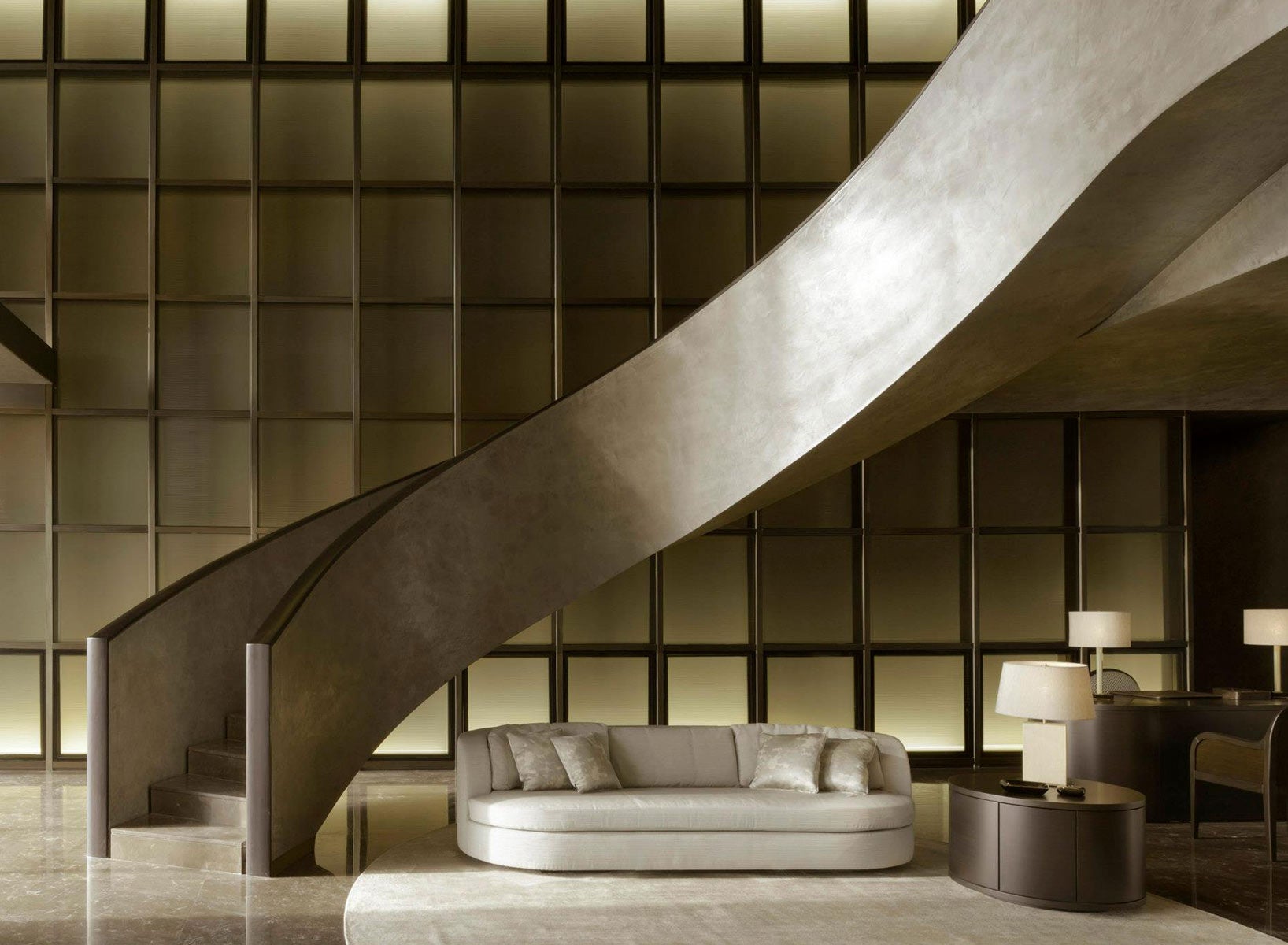Giorgio Armani was not the first boldface fashion designer to get into the home business—Ralph Lauren beat him by at least two decades, and a long list of apparel brands, from Calvin Klein and Hermès to Liz Claiborne, have all played in the home space over the years. Some, like Armani, have opened their own dedicated home stores, too.
But as the famed Italian designer celebrates the 20th anniversary of Armani/Casa, it is worth noting the unique position the brand has carved out for itself in both the U.S. and around the world, retaining its elite status with just a handful of stores and a low-key profile. (In fact, other than an editorial feature in the September issue of Wallpaper*, there has been no official celebration of the two-decade mark, in keeping with the brand’s understated approach.)
Yet Armani/Casa is perceived to be in a class by itself: a brand that translates Armani’s designs into upholstered furniture, textiles and tabletop. Unlike other European luxury brands—Louis Vuitton, Gucci and Prada come to mind—there are no logos or interlocking patterns that instantly identify the product’s provenance. If you know Giorgio Armani, you will recognize his home furnishings. If you don’t—well, you won’t.
Armani/Casa was launched in 2000, when Armani opened the first dedicated home store in Milan, where his company is headquartered. A year later, the brand arrived in the U.S. with the debut of showrooms in New York and Los Angeles, as well as an additional European outlet in Paris. Today there are four North American locations, including Miami and the first Canadian store, which opened in Vancouver last year. Other stores are located in Shanghai, Beijing and Tokyo, and the company also sells online.
Retail Insider, a Canadian e-newsletter, trumpeted the brand’s aesthetic while reporting on the Vancouver store opening: “For decades the Armani name has been synonymous with exquisite taste and Italian style. The Armani/Casa brand embodies simple but elegant style. Giorgio Armani loves linear design, minimalism interlinked with cultural connotations, and art deco style of the 1930s.”
On July 30, designer Sara Malek Barney equips designers with the critical skills to streamline their sourcing process as a means to enhancing profitability without sacrificing integrity—it even includes a discussion on the oft-overlooked topic of markups. Click here to learn more and remember, workshops are free for BOH Insiders.
More recently, Armani has expanded his Casa brand into new areas, including hotels and residential design, through the Milan-based interior design arm of his business, which he launched in 2004. Residences by Armani/Casa, a 60-story oceanfront condominium tower in Sunny Isles Beach, Florida, designed by celebrated Argentinian architect César Pelli, opened earlier this year. The brand also extends beyond furnishings into other home categories through several partnerships, including kitchens with Dada, bathroom fixtures with Roca, textiles with Rubelli, and wallcoverings with Jannelli & Volpi.
Although the original New York and Los Angeles stores were in bustling retail districts, the brand moved into design centers (the D&D Building and the Pacific Design Center) in 2011. Come 2023, it is scheduled to be on the street once again in New York as part of a new Armani flagship on Madison Avenue.
The Armani/Casa website says the collection is the “pursuit of symmetry & harmony,” and for 20 years it has been that—not a single thing more. In the Wallpaper* feature, Armani acknowledges the milestone: “I successfully and independently expanded into sectors beyond fashion to offer my all-embracing philosophy of lifestyle. I can say this is an enormous achievement.”
Homepage photo: The interior of the Residences by Armani/Casa condominium tower, which was designed by César Pelli | Dezer Development
____________
Warren Shoulberg is the former editor in chief for several leading B2B publications. He has been a guest lecturer at the Columbia University Graduate School of Business; received honors from the International Furnishings and Design Association and the Fashion Institute of Technology; and been cited by The Wall Street Journal, The New York Times, The Washington Post, CNN and other media as a leading industry expert. His Retail Watch columns offer deep industry insights on major markets and product categories.





























